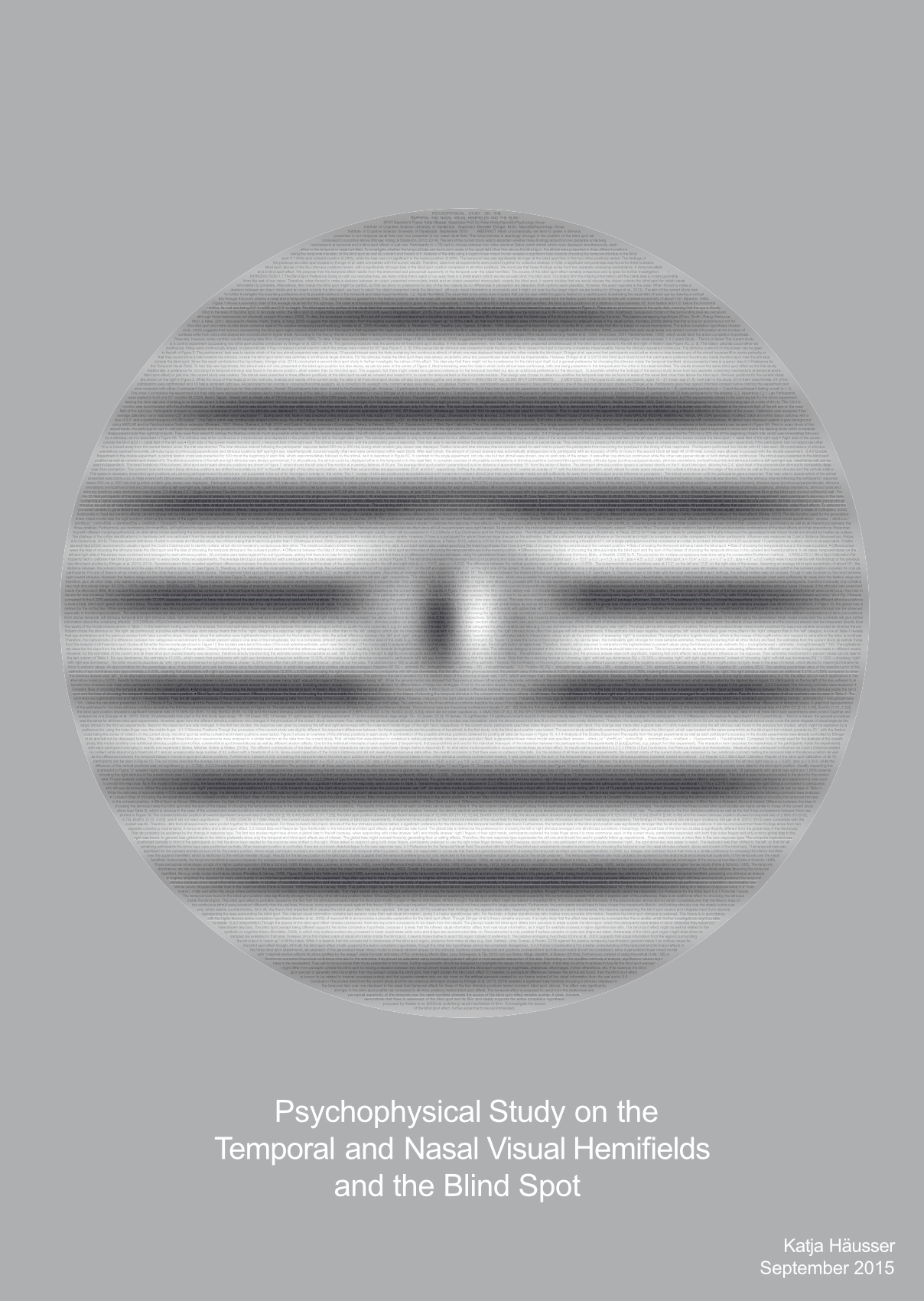-
Shivakumar’2024
This thesis explores innovative ways to represent uncertainty in data visualization. Using a Voronoi-plot generated by the Makie.jl library, Benedikt Ehinger created a Thesis Art piece that illustrates how we perceive complexity in time-series data.
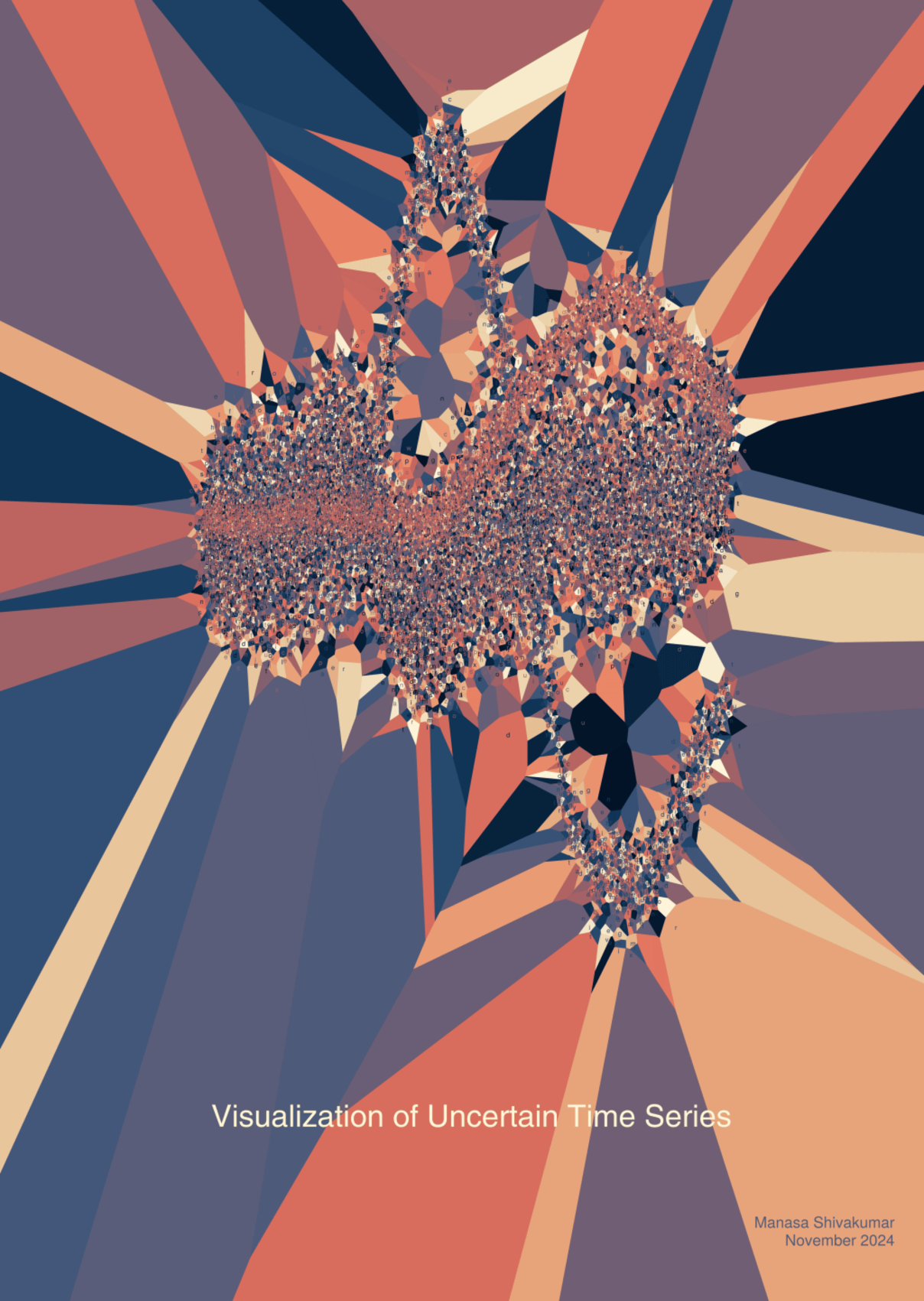
-
Bocksch’2024
This thesis explores the development of an Augmented Reality (AR) application aimed at improving the EEG cap preparation process. The Thesis Art piece visualizes the electrode mapping process using AR and reflects on its potential impact on improving work conditions in EEG applications.
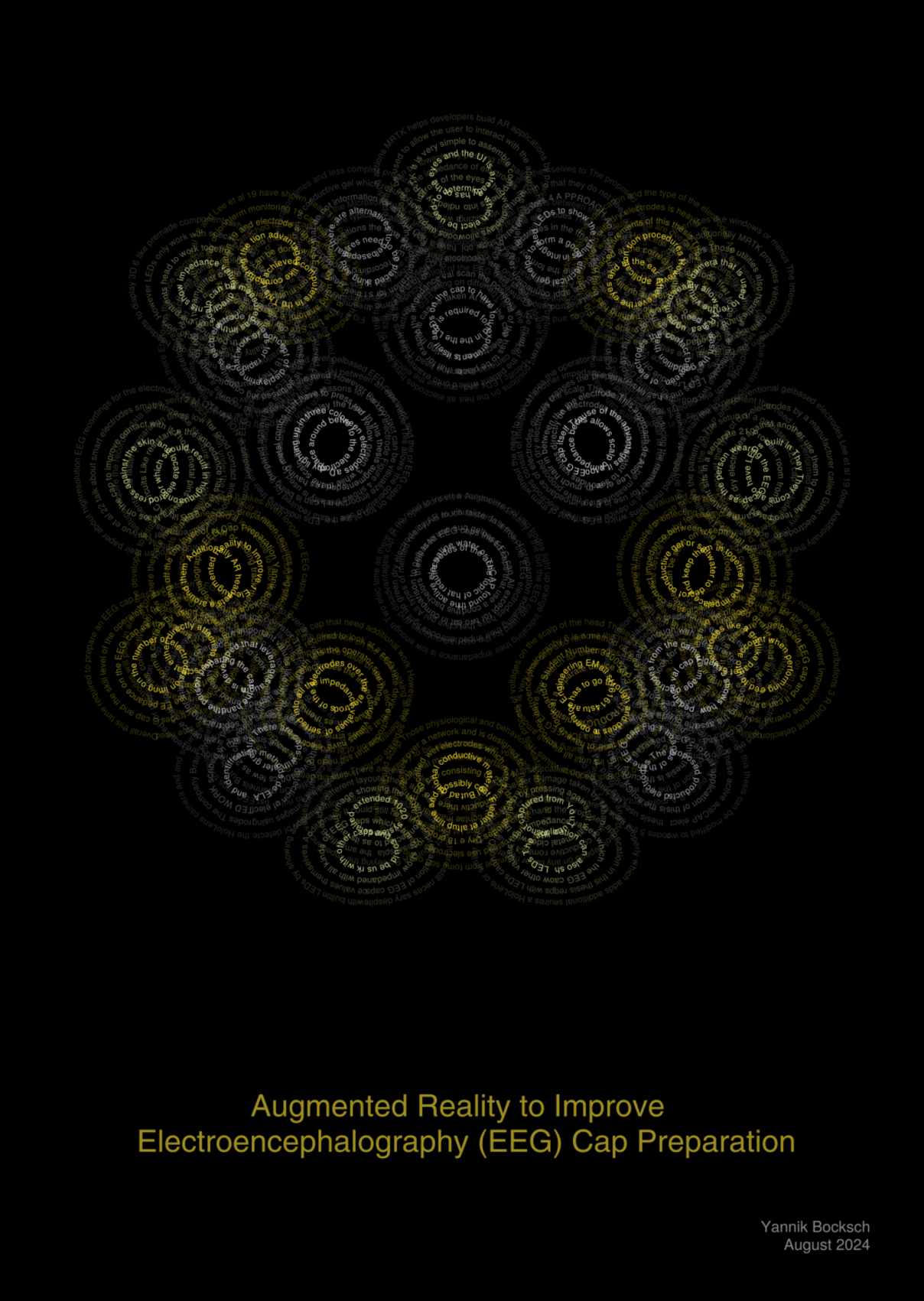
-
Lulkin’2023
This thesis focuses on reimplementing the popular yet complex AMICA signal analysis algorithm in JuliaLang. The Thesis Art piece provides a visual representation of the algorithm’s core concept, transforming abstract mathematical operations into a compelling artistic visualization.
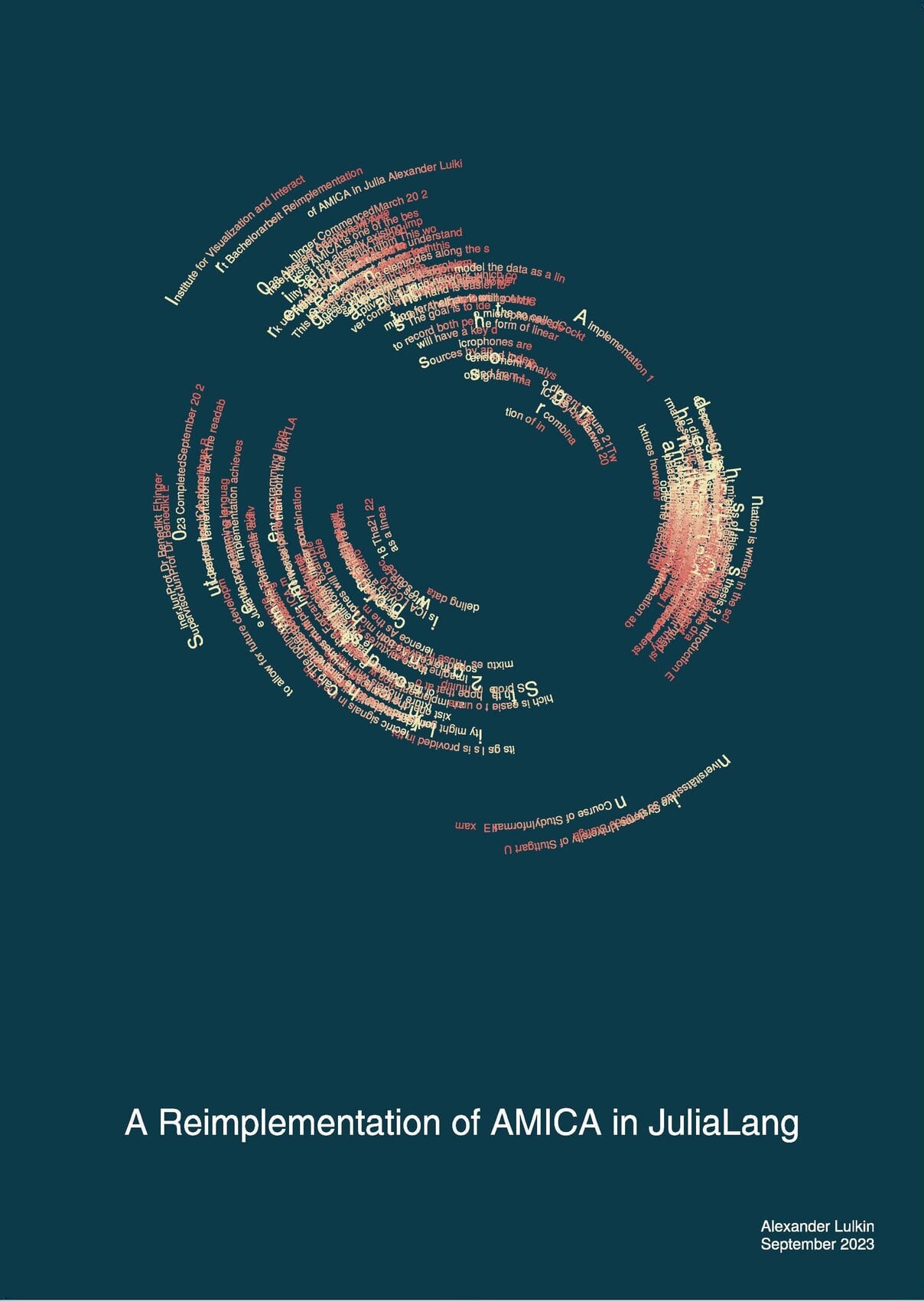
-
Geiger’2022
Martin Geiger’s thesis explores how controlling for duration effects impacts neural responses — challenging a previously well-known brain reaction. The accompanying Thesis Art piece represents the experimental paradigm using bold, minimalist letters, directly reflecting the stimuli used in the study.
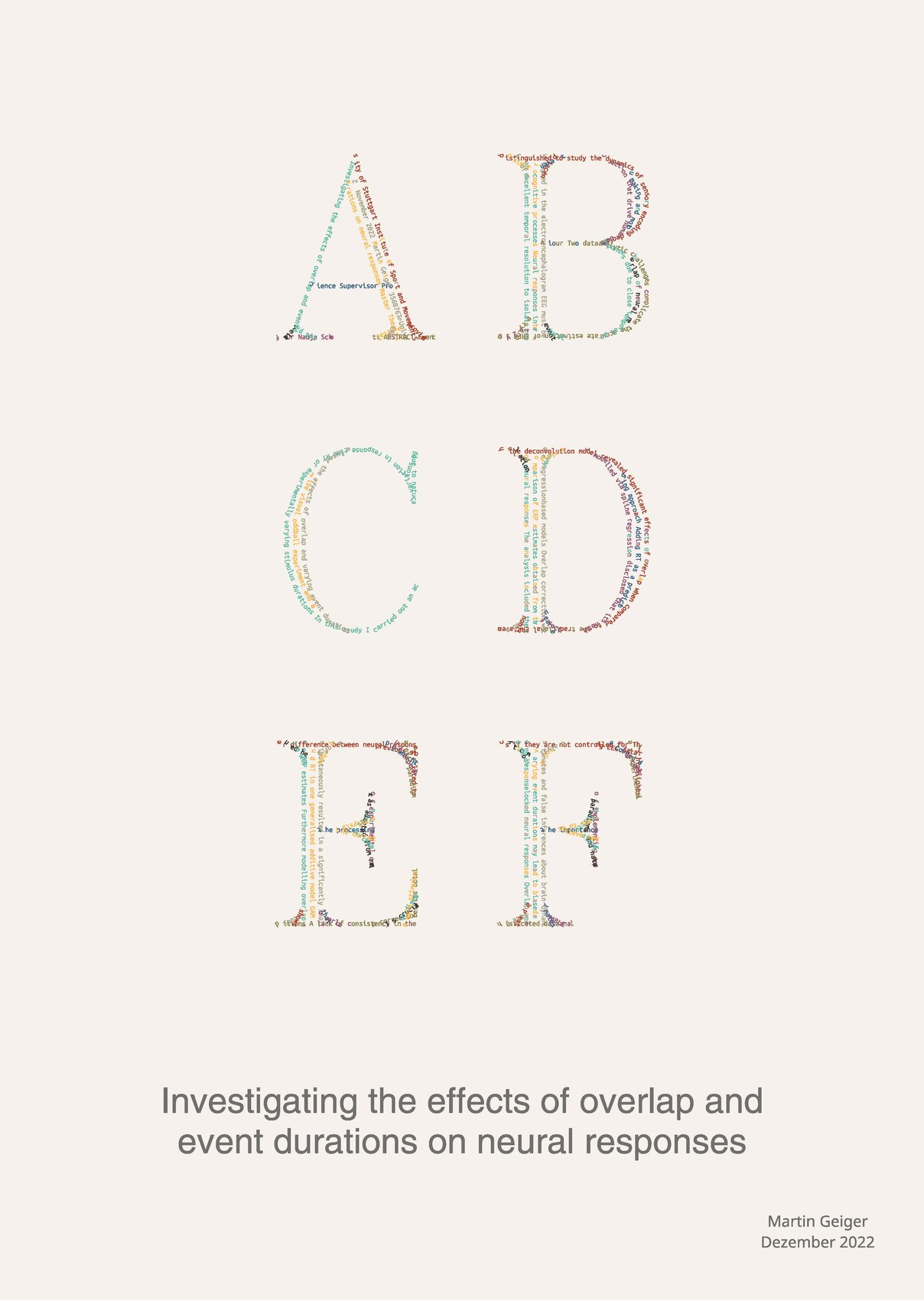
-
Lokman’2022
Furkan Lokman’s thesis delves into brain responses to eye movements, focusing on how orientation — left, right, or diagonal — affects neural activity. The corresponding thesis art piece transforms brain response data into the shape of an eye, connecting the research topic to its visual representation.
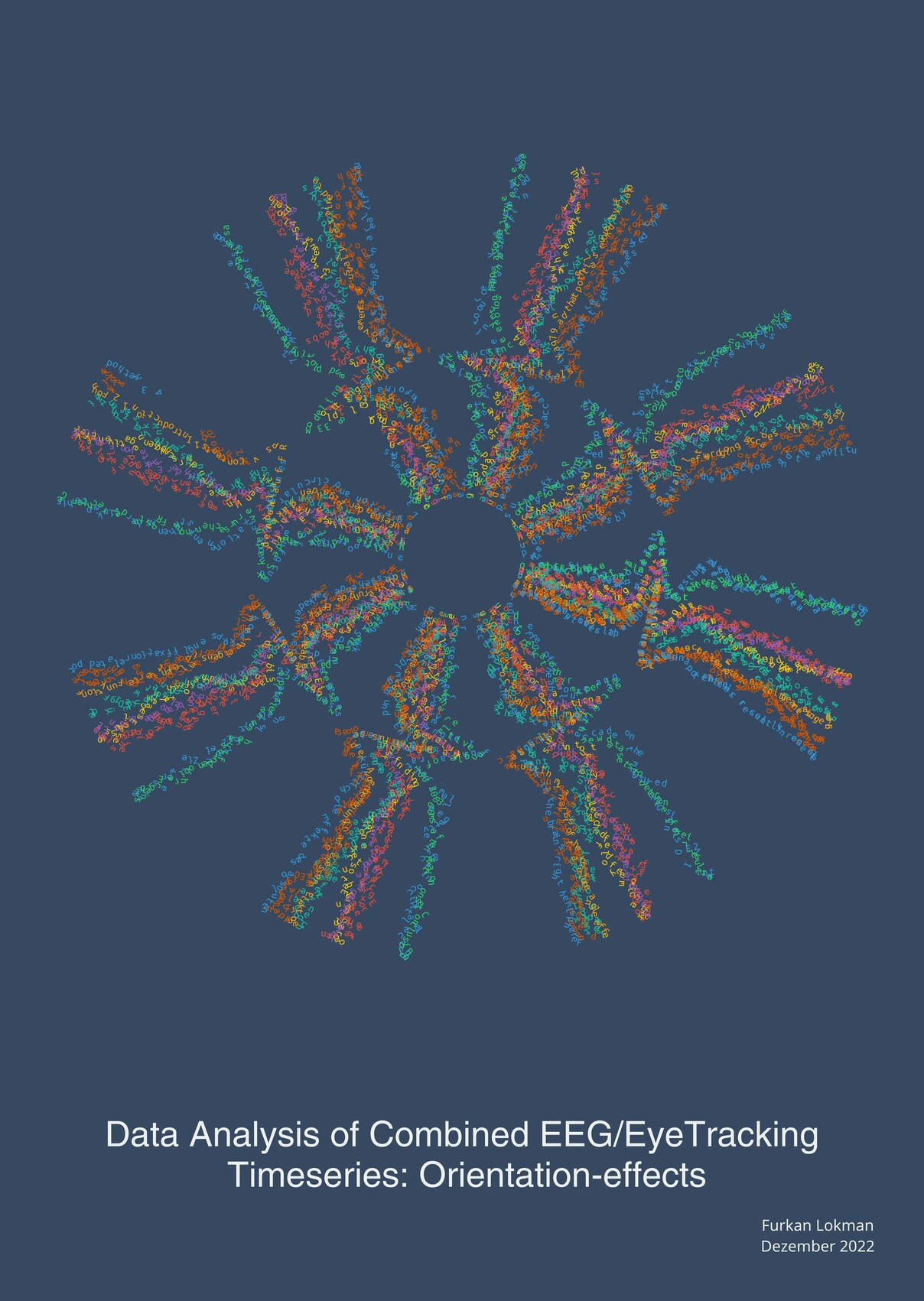
-
Lips’2022
Luis Lips’ thesis evaluates two statistical approaches for analyzing EEG data. A foundational achievement was developing a brain activity simulation software package, while the thesis art piece visualizes the quantitative difference between these methods through a heatmap-based graphic.
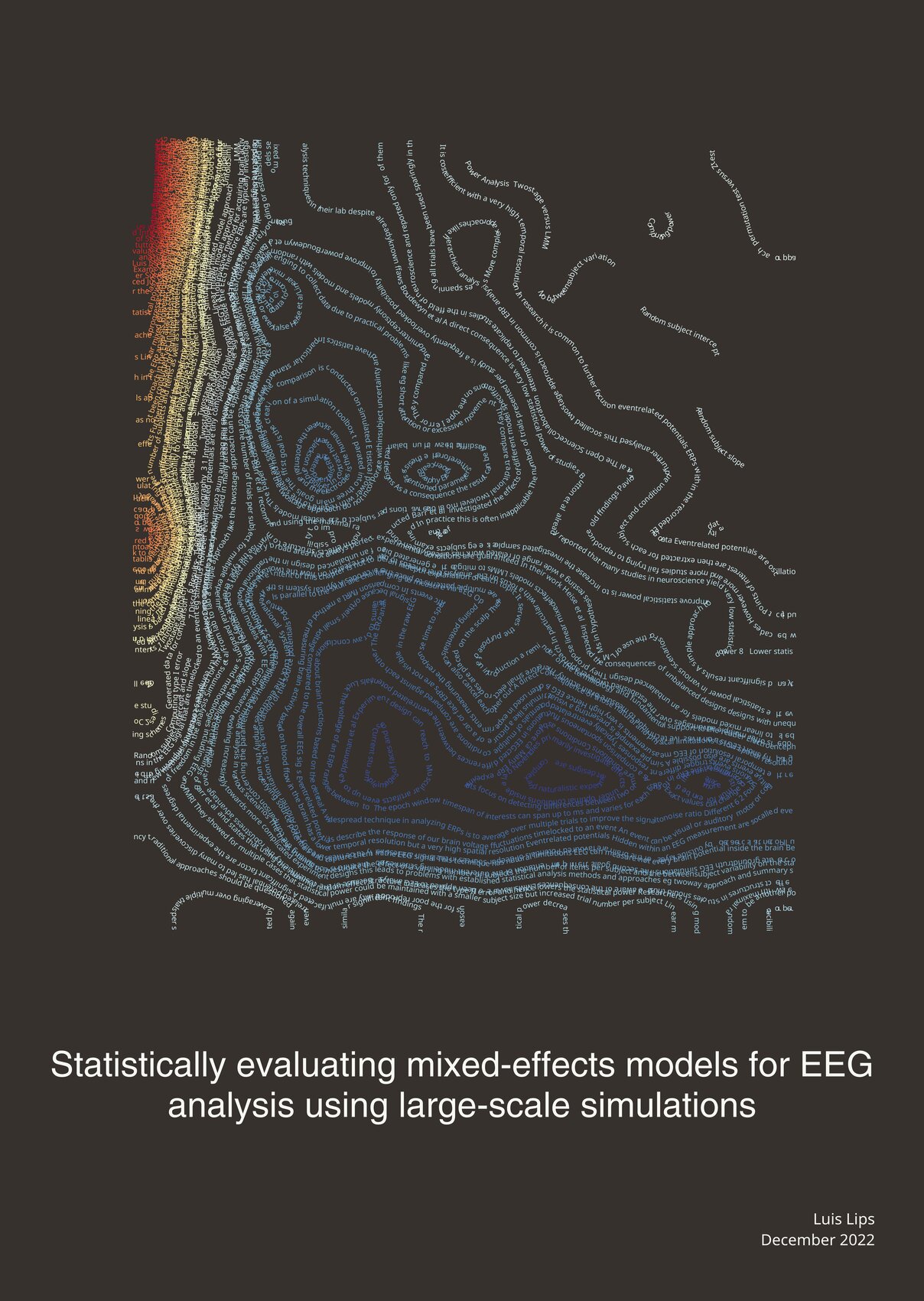
-
Haas’2021
Jan Haas’ thesis delves into the effects of computer gaming on the brain, using advanced de-convolution techniques to better understand cognitive processes. The Thesis Art piece visualizes the in-game trajectories of players steering a spaceship, offering an innovative look at gameplay behavior.
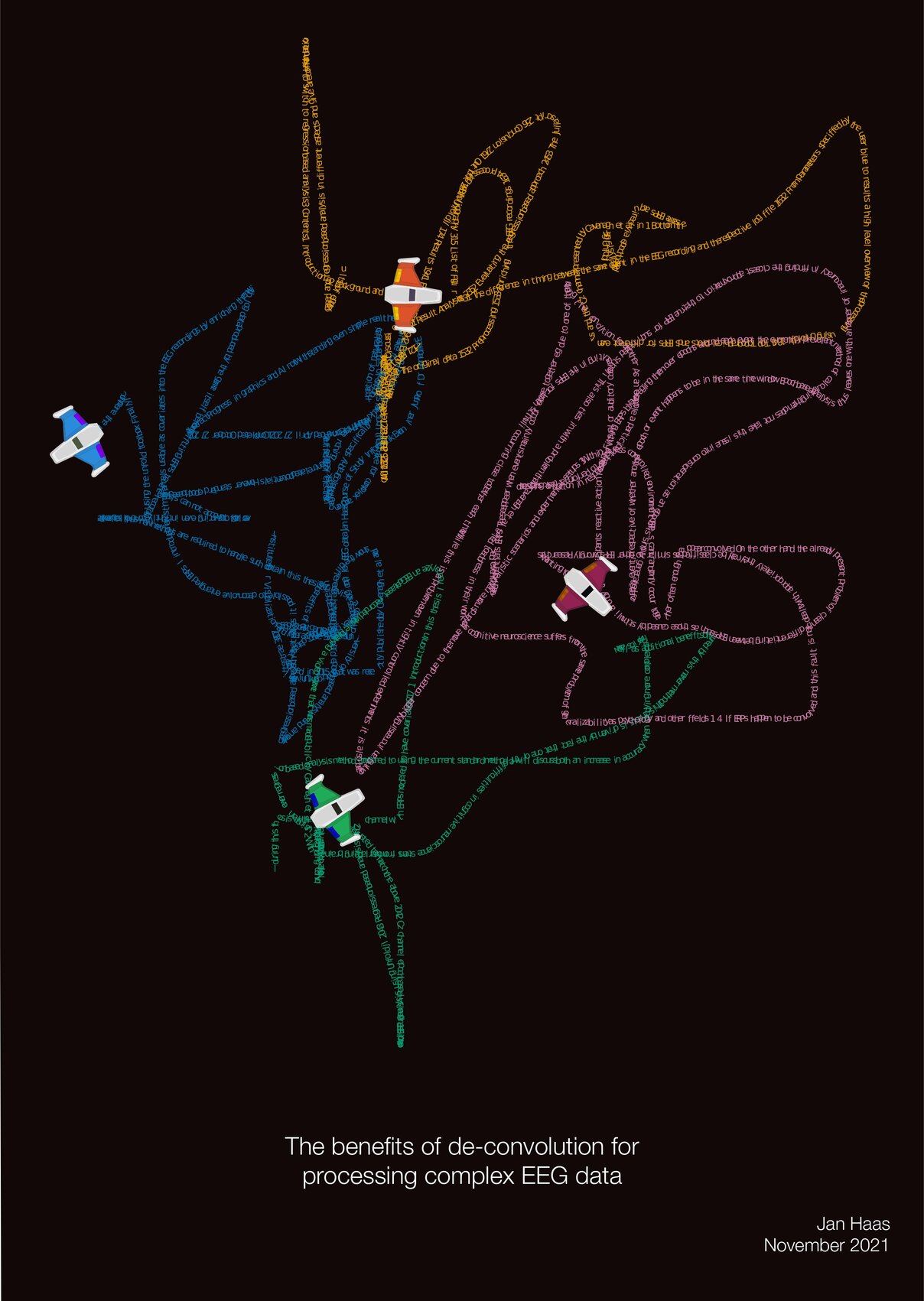
-
Bonasch’2022
Hannes Bonasch explored how different cognitive tasks relate to one another within the same brain. His surprising results show little to no correlation in brain activity across tasks, offering a new perspective on cognitive task processing. For the Thesis Art piece, Benedikt Ehinger visualized this by using “topographical” plots, creating a representation of the brain’s…
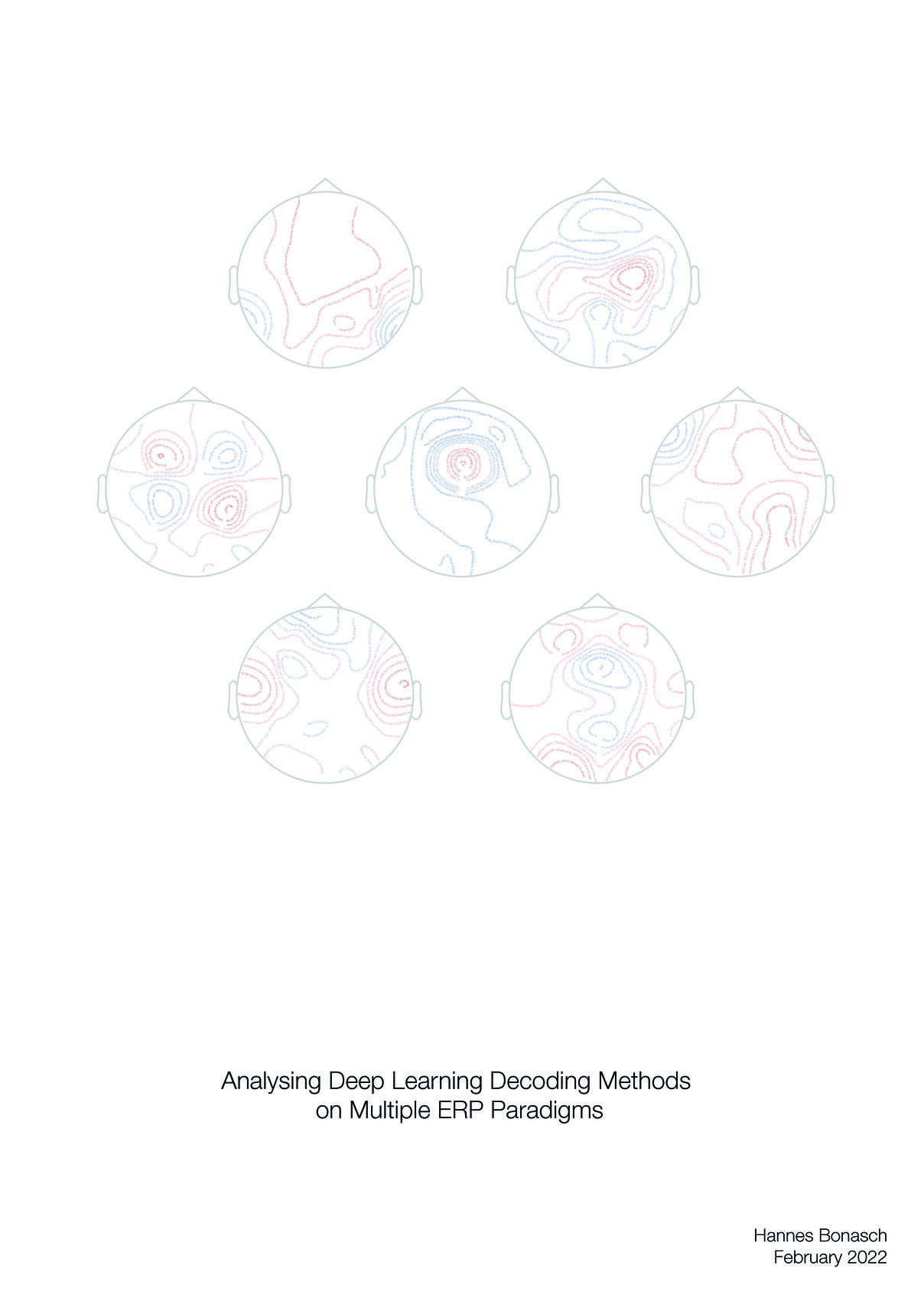
-
Schröder’2021
This thesis investigates the challenge of dealing with autocorrelation in brain activity: if signals at 103 ms and 104 ms are almost identical, how does this affect statistical analysis? The surprising result — it’s not as problematic as expected! The Thesis Art piece visualizes this concept through an intricate plotting technique inspired by mathematical functions.
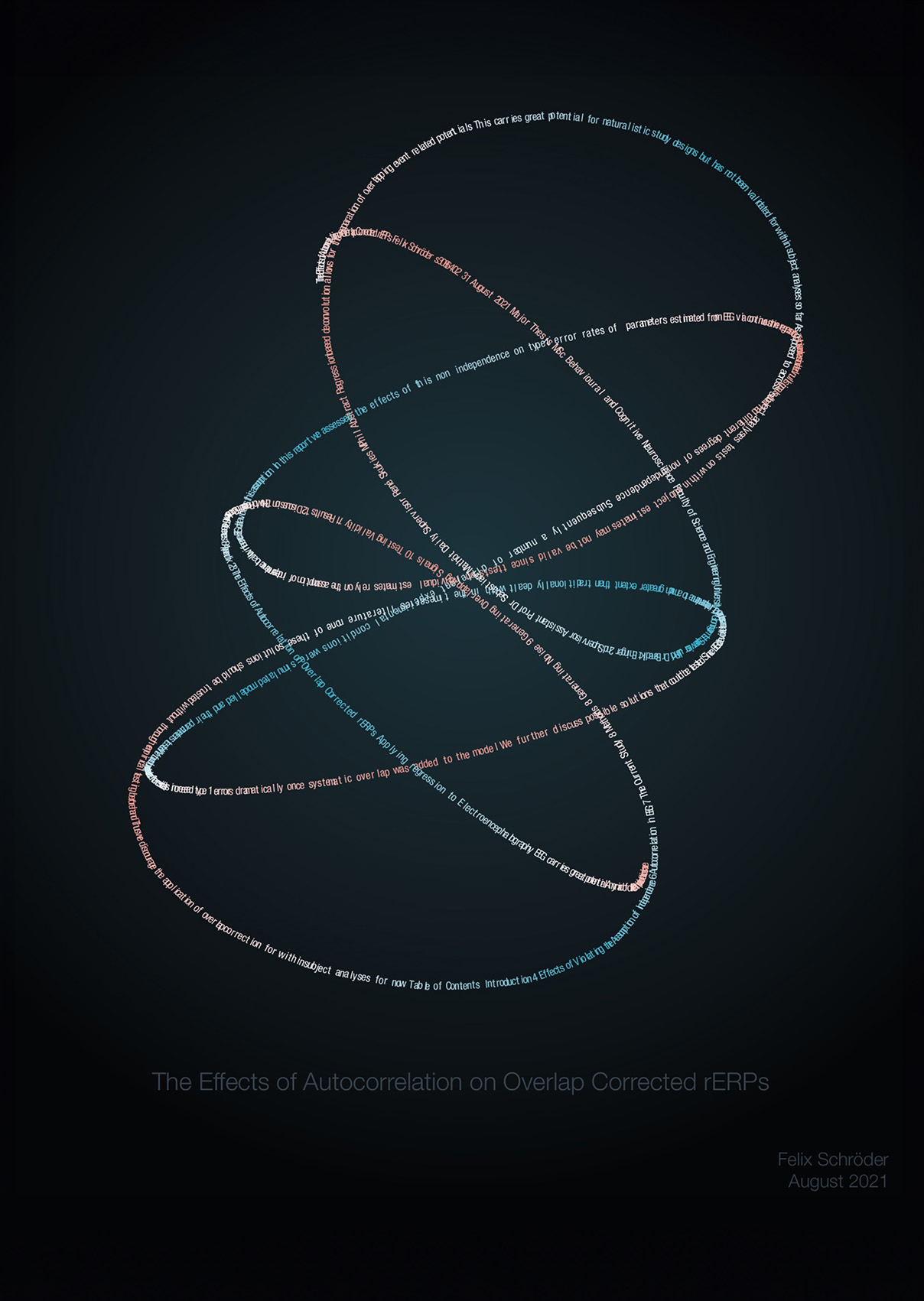
-
Degutis’2020
This thesis explored whether laminar fMRI at 3T could replicate findings from higher-field MRIs. While the attempt failed, it led to a visualization of the brain’s layered structure, creatively solving data connectivity challenges.
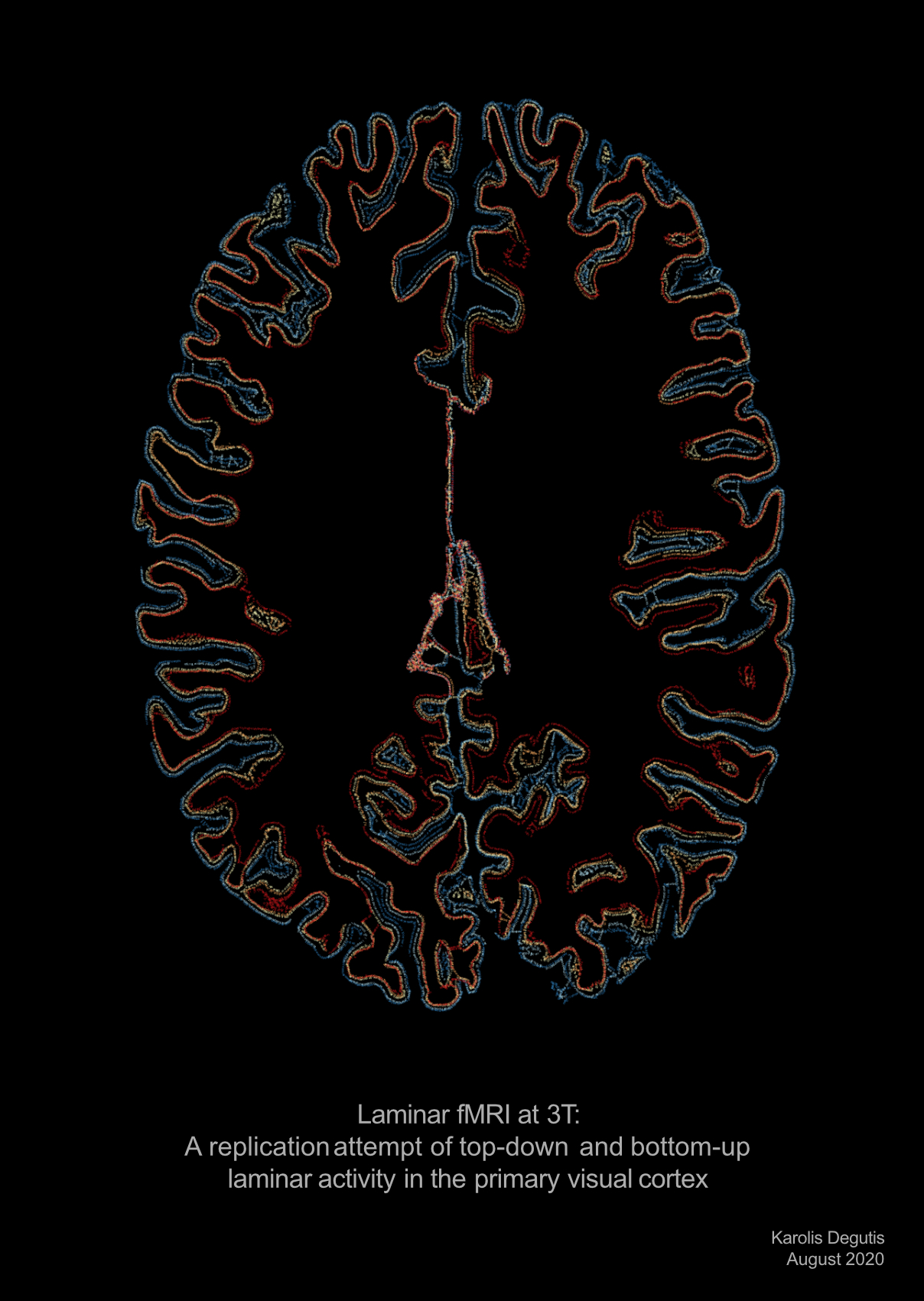
-
Groß’2018
This thesis developed a benchmark test to evaluate the strengths and weaknesses of two popular eye-trackers. The Thesis Art piece visualizes six key tasks from the benchmark, showcasing the complexity and elegance of eye movements.

-
Vortmann’2018
This research explores how the brain tracks multiple objects and how brain activity can indicate when an object is lost. The Thesis Art piece visualizes EEG data over time, depicting tracking errors and the challenge of decoding brain signals, primarily using R for the data plotting.
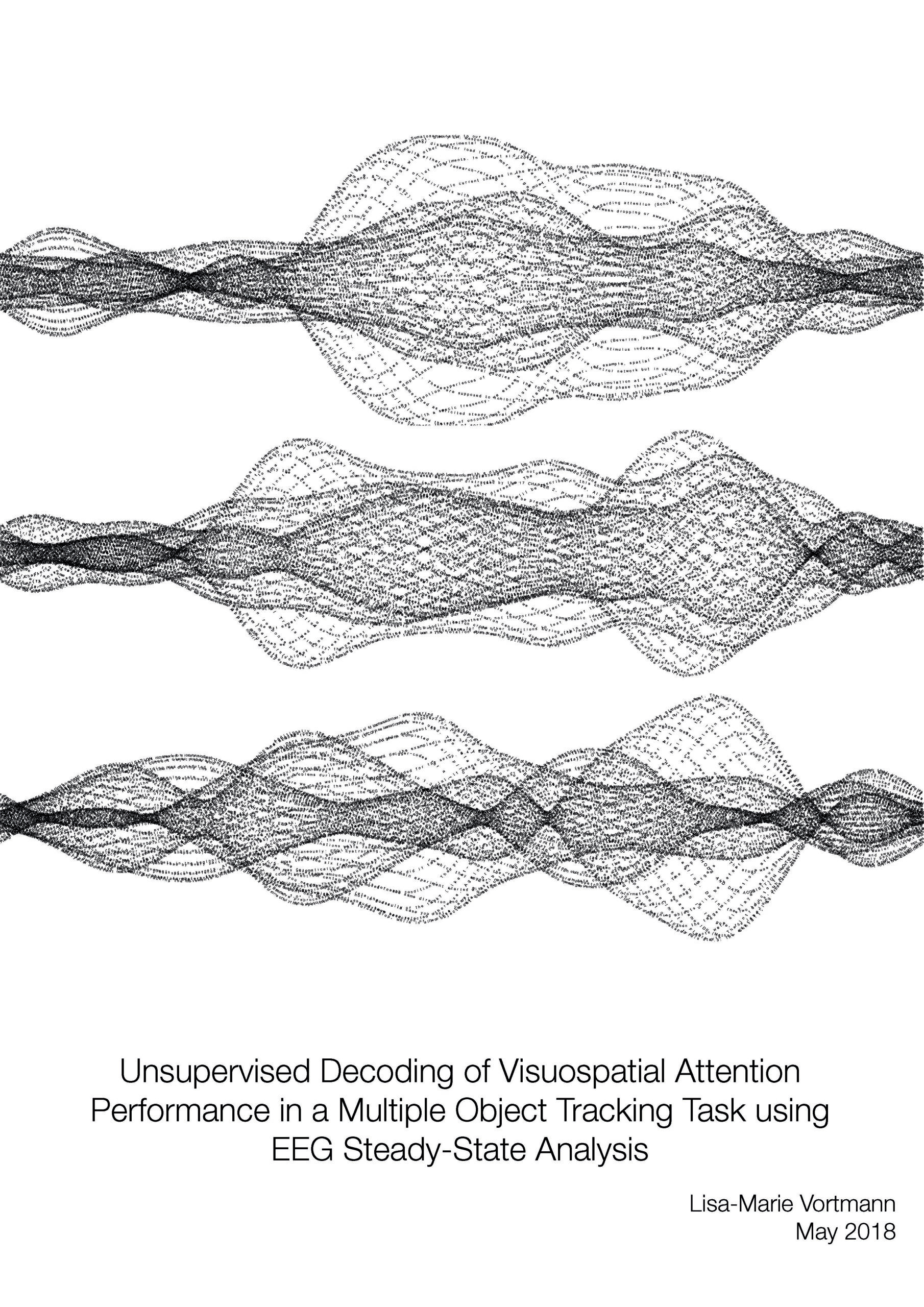
-
Sokotushchenko’2018
This work investigates whether brain responses to prediction errors differ based on whether a stimulus is an afterimage or a directly perceived stimulus. The Thesis Art piece was created by visualizing EEG data in R, illustrating brain responses to surprising stimuli and highlighting how each trace is an average of multiple trials.
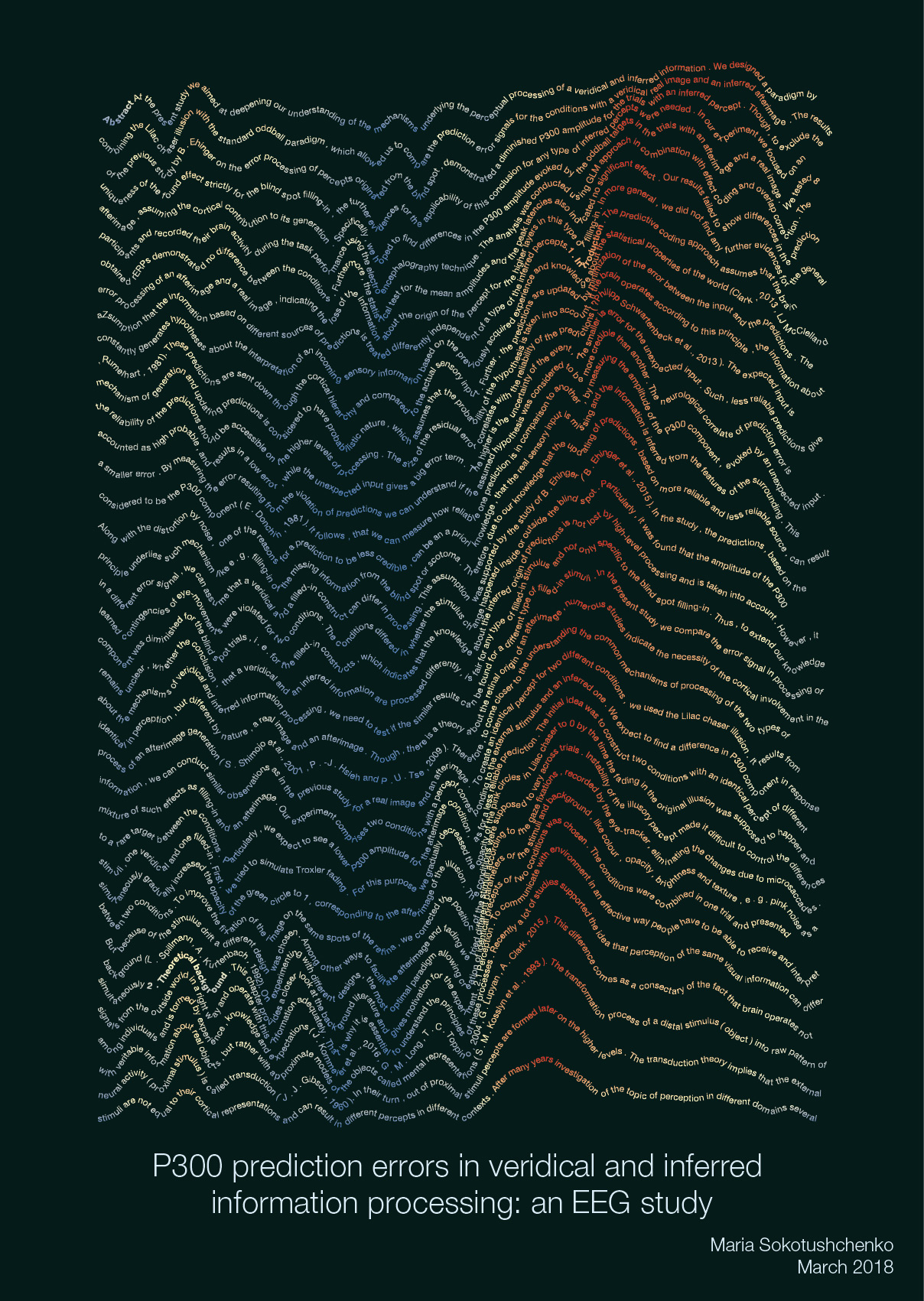
-
Pinzuti’2016
Edoardo developed a software package to analyze causal information transfer between brain areas. The Thesis Art piece, inspired by the Lorenz system’s chaotic attractor, features text placed along a path, marking a significant milestone in the visual concept.
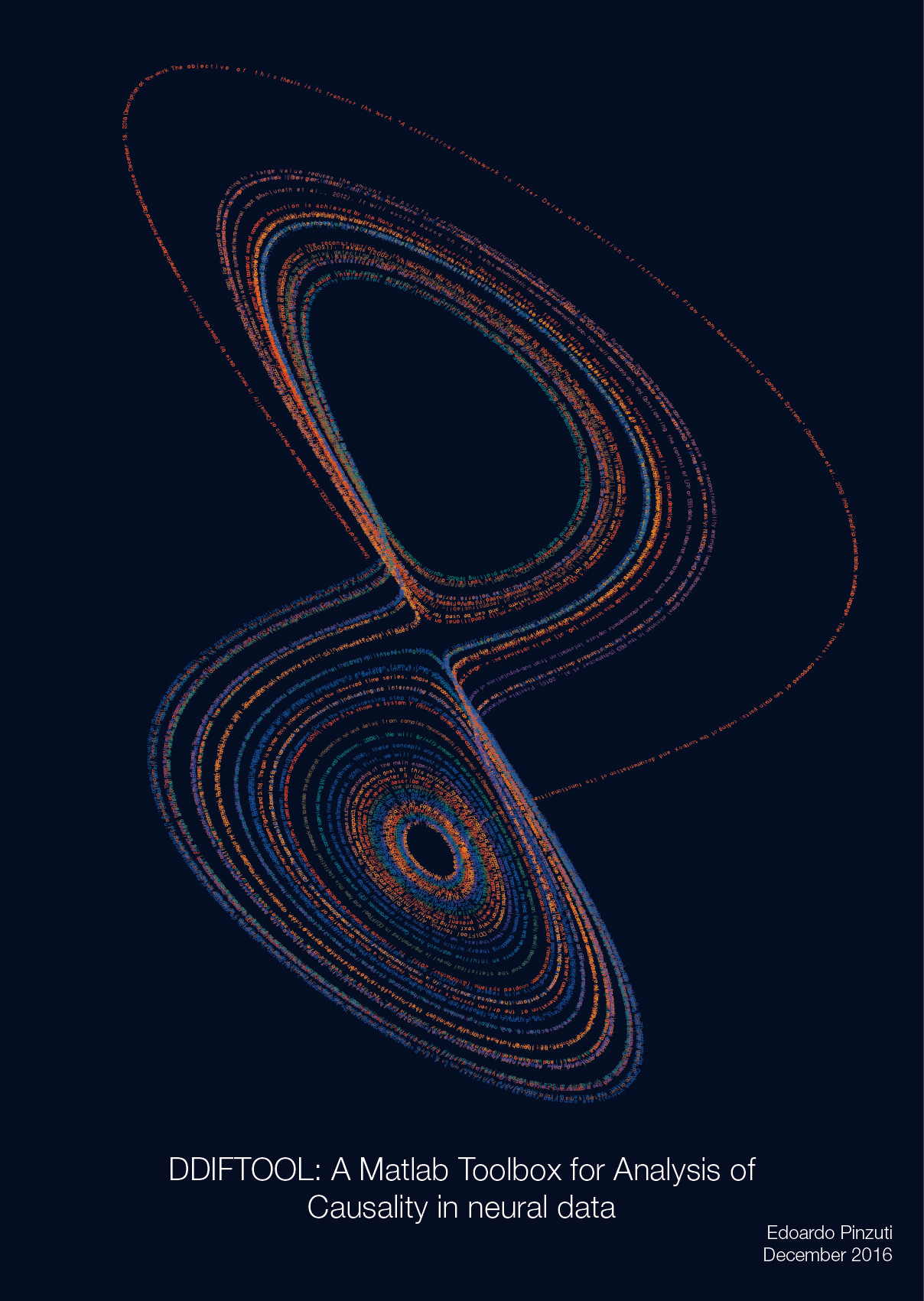
-
Schepers’2017
Judith’s thesis explored eye-movements in the context of exploration and exploitation behaviors, replicating and expanding the Hicks effect. The Thesis Art piece visualizes the participants’ experience of exploring stimuli, inspired by the concept of seeing through Swiss cheese. The design combines multiple miniatures of pages, bringing both the visual and textual aspects of the research…
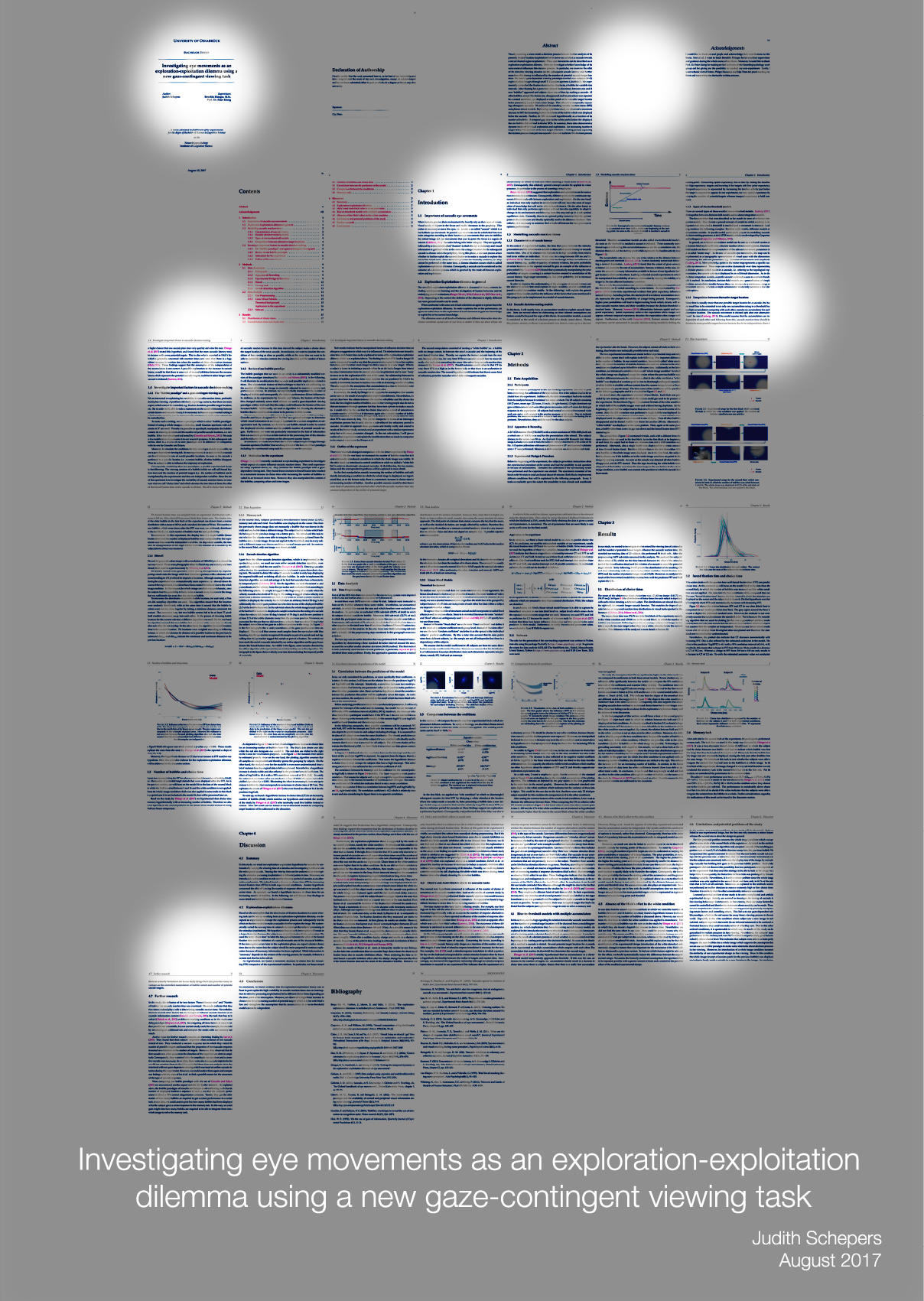
-
Wu’2016
Jiameng’s thesis explores eye-movements and their relationship to visual stimuli, using computational vision models. The Thesis Art piece applies these filters to the manuscript, creating an abstract, visual representation of the study’s findings.
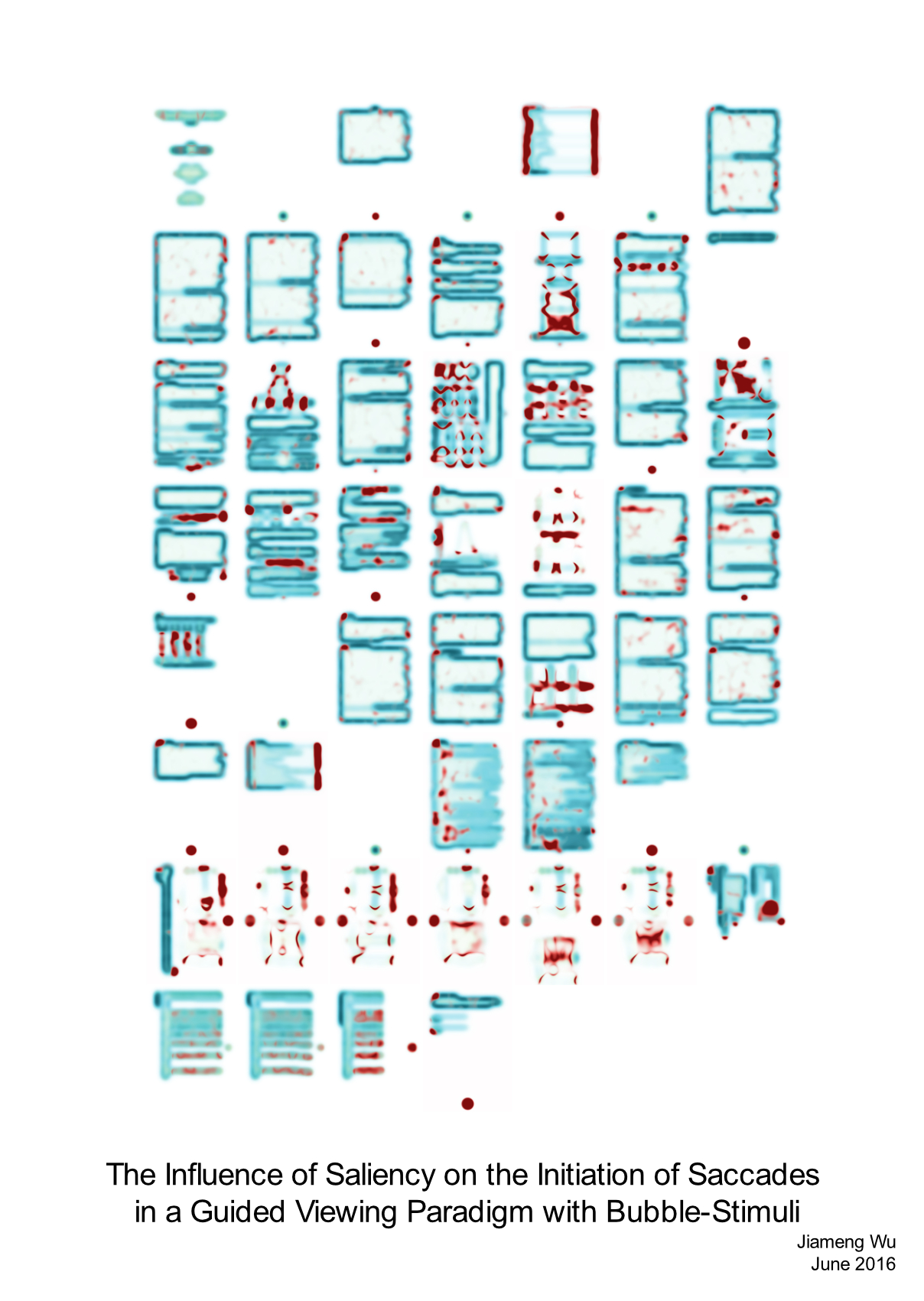
-
Kaufhold’2015
Lilli Kaufhold’s thesis examines the timing of eye-movements and their connection to the Hicks effect. The accompanying Thesis Art piece visualizes this through multiple miniatures, each representing a fixation point while reading, offering a meta perspective on eye-movements in a study about eye-movements.
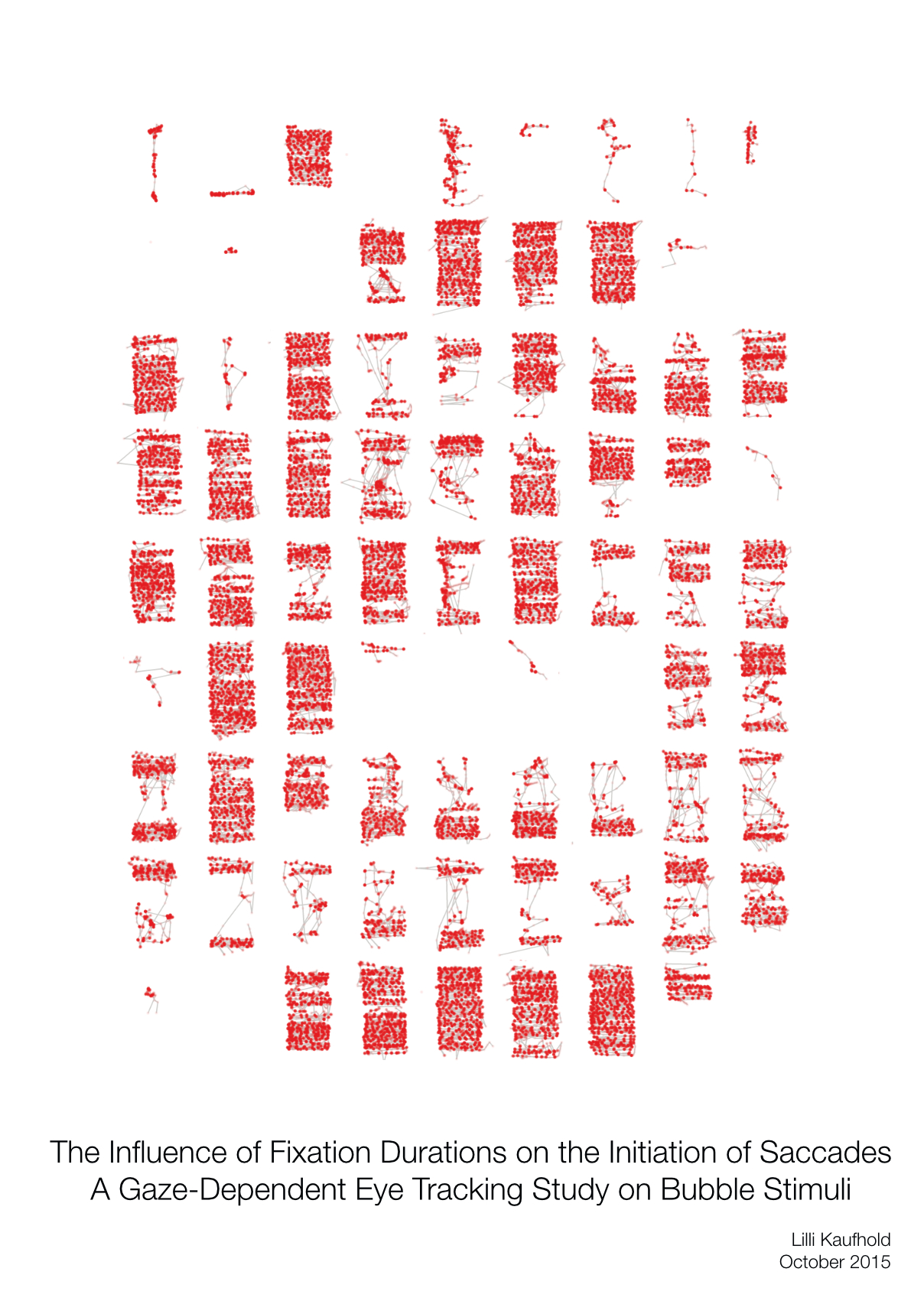
-
Häusser’2015
Katja Häusser’s research explores how much we rely on brain-generated visual perceptions compared to actual seen ones, revealing that we trust the former more. For the corresponding Thesis Art piece, Benedikt Ehinger used Adobe Illustrator to create a visual representation, incorporating the Gabor patch stimulus used in the study.
